
The number of laptop options in 2016 has been wide and varied. Form factors like convertibles and 2-in-1s have become as common as traditional clamshells, and the release of Nvidia’s Pascal GPU architecture may forever change our expectations of gaming laptops. No matter what you’re hunting for, it’s been a great year for anyone buying a new system.
To help you with your decision, we’ve been hard at work evaluating more laptops—our latest reviews include the Lenovo Yoga 910, 2016 HP Spectre x360, Acer Predator 15, Acer Swift 7, and 2016 Surface Book i7. Competition’s been fierce, and so we’ve also got new winners in our Best Ultrabook (2016 Kaby Lake Dell XPS 13), Best Convertible (2016 HP Spectre x360) and Best Gaming Laptop (MSI GT73VR Titan) categories, plus a couple of fresh runners-up, too. And with the launch of Nvidia’s game-changing Pascal GPUs, we’ve even introduced a new category: Best Portable Gaming Laptop.
- Best ultrabook laptop
- Best convertible laptop
- Best budget ultrabook laptop
- Best luxury laptop
- Best hybrid laptop
Best ultrabook laptop
Dell might be sticking to the adage of “If it ain’t broke, don’t fix it” when it comes to the XPS 13, but that strategy keeps producing the best ultrabook of the bunch. The Kaby Lake XPS 13 shares the same design as its predecessors: a quality aluminium exterior and carbon-fiber top, and that wonderfully compact, bezel-free 13-inch screen.
Dell actually released two updates to the XPS 13 in 2016: The one at the start of the year swapped in a Skylake CPU, added a USB Type-C port that served as an alternative charging port, and offered upgraded storage options. The most recent refresh—and our new pick for Best Ultrabook—keeps the same chassis changes as the Skylake XPS 13, features a jump to Intel’s new Kaby Lake processor, and sports a slightly larger battery. You get improved performance across the board, with a nice bump of an extra half-hour of battery life during video playback.
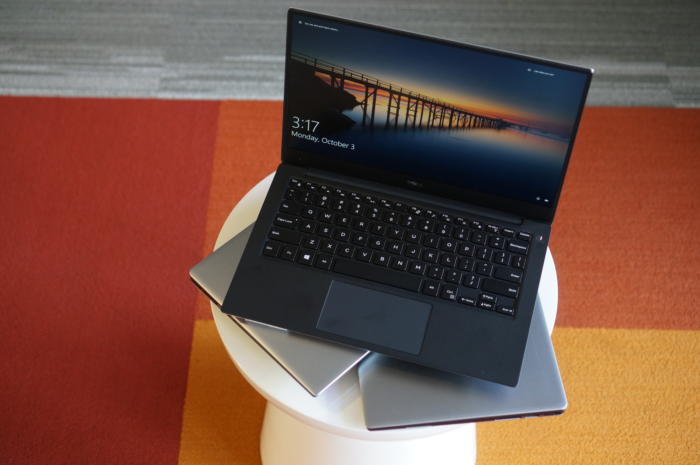 Gordon Mah Ung
Gordon Mah UngOur only lingering complaint is the small keyboard, but overall, you can’t lose with the newest XPS 13. It’s a truly compact ultrabook that punches out of its class.
[$800–$2,039 MSRP; $1149 MSRP as reviewed]
Runner-up
If looks are more your thing, the HP Spectre 13.3 certainly has a distinct profile: It’s one of the thinnest ultrabooks around. For anyone coveting the streamlined experience of Apple’s 12-inch MacBook, this 13-inch notebook will bring you close while providing superior performance.
You might expect such a skinny laptop to sport a lower-wattage Core m processor, but HP fit a 15W Skylake Core i7-6500U into this Spectre. That puts it on a par with other, chunkier top ultrabooks (like the XPS 13). Combined with its 256GB M.2 SSD, it runs smoothly and swiftly during typical office drone work (word processing, spreadsheet editing, web browsing, etc), without any heavy throttling of performance during CPU-intensive tasks. HP also made the ports count: While there are just a few, you get not one but two Thunderbolt 3 ports, as well as a USB-C port.

The drawbacks of this modern and sleek notebook are its battery life, which is modest due to its smaller battery, and its wider frame. (The Spectre 13.3’s hardware and cooling configuration requires a certain amount of space—HP’s engineering is impressive but can’t defy the laws of physics.) It’s for those reasons that we prefer the Dell XPS 13, but this laptop is still a very fine companion.
[$1,170–$1,250 MSRP; $1,250 MSRP as reviewed]
Best convertible laptop
We liked the first Spectre x360 when it launched back in 2015, but that 2-in-1 laptop had a few flaws. The updated version, which just launched in October, blows away its predecessor by being smaller, thinner, and noticeably lighter, while still providing excellent performance and battery life.
Inside our review model was a Kaby Lake Core i7 processor that kept pace with a quad-core Skylake CPU during tasks like word processing and spreadsheet editing, and handled games like Minecraft and League of Legends at low-resolution and low-quality image settings. The battery on our unit lasted almost eleven hours during continual video playback.
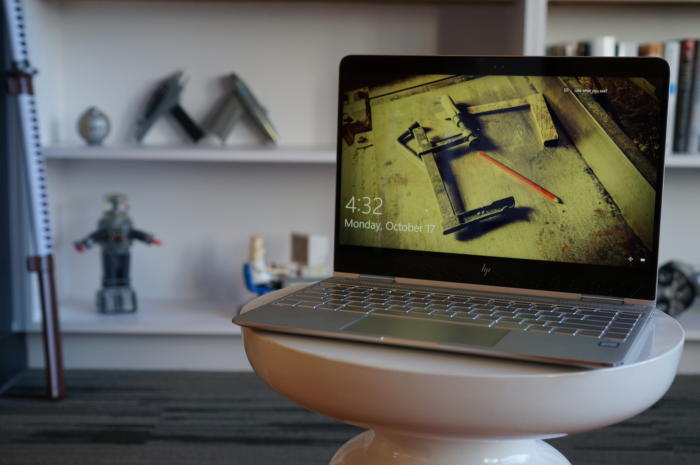
Gordon Mah Ung
This laptop is so good, it gives our top pick for Best Ultrabook a run for its money. If it weren’t for the wide-aspect ratio trackpad and the low number of ports (just three total, and you lose one to charging whenever it’s time to top up), it might have won. For now, though, it can rule this convertible category until it’s time to challenge the Dell XPS 13 again.
[$1,160–$1,300 MSRP; $1,300 MSRP as reviewed]
Best budget ultrabook laptop
Enter Asus’ UX305, the best budget ultrabook in town. It packs in 8GB of RAM and a 256GB SSD for the low price of $700.
You’d think Asus would skimp in build quality or sneak in a lousy screen, but it didn’t. The body is aluminum, and the display is a 1920×1080 IPS screen with anti-glare finish. It’s also one of the thinnest ultrabooks today, at roughly 12mm thick and weighing just 2.6 pounds.
The CPU isn’t a Core i5-class, but rather than step down to Atom, Asus stepped sideways, with Intel’s Core M in the original UX305 and the new Core m3 in the updated UX305. We’re actually in the middle of testing the updated Core m3 UX305. The early results say it’s comparable in every way except perhaps performance.
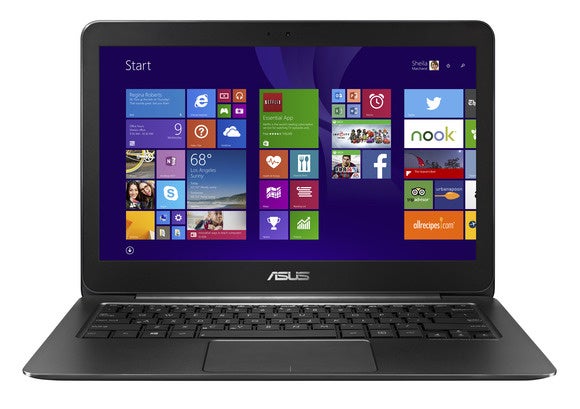
Asus
There are some compromises. There’s no backlighting on the keyboard, which is pretty standard in any Ultrabook today. The trackpad is a tad springy. Still, it’s one hell of a deal in a price range that usually nets you thick, ugly, and plastic.
[$699–$999 MSRP; $699 MSRP as reviewed]
Best luxury laptop
There’s no way to describe Microsoft’s Surface Book as anything but a luxury item. The configuration you want—the one with the GPU under the keyboard—isn’t even available until you fork over $1,650. But what you get is glorious.
Start with the beautiful, high-resolution 13.5-inch screen, a discrete GeForce option, Skylake dual-core and exceptional battery life. That you can remove the screen to use as a tablet—err, clipboard—with the included pen is just a major bonus.
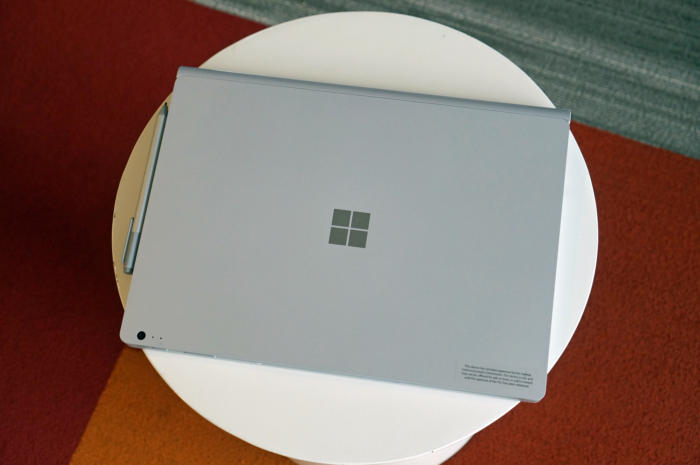
Performance in general is near the top of the heap, particularly in the Core i7 model that we reviewed. On graphics loads, including video-accelerated encoding, it can’t be touched by anything in its class.
Those who can afford it are going to get what they want: a beautiful laptop that’ll probably start conversations in the first-class cabin as you fly from Dubai to London.
[$1,499–$3,199 MSRP; $3,199 MSRP as reviewed]
Best hybrid laptop
The reigning winner in this category shouldn’t be a surprise, given that Microsoft gave legs to the concept of hybrid tablet/laptop devices. The Surface series is really an evolutionary step beyond the typical “convertible” devices that physically separate from the keyboard to run independently as tablets. Surface clones have arisen that are also light, yet still very capable: Lenovo has its Miix 700, HP has its Spectre 12 X2.
We expect the clone wars to keep marching on, but the best one today remains the Surface Pro 4. It has a top-rated display, great performance, and its keyboard and trackpad are miles ahead of competing designs (*cough* iPad Pro). We choose it over the Surface Pro 3 for its performance and better thermals (with less fan noise) compared to the older model.
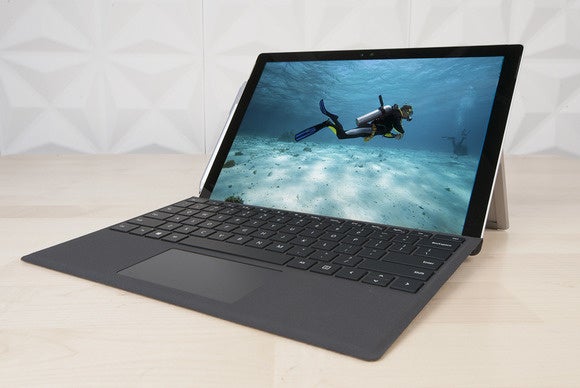
Rob Schultz
The only caveat: It’s expensive—and the essential keyboard adds $130 to the price. (Nope, it’s not included.) That means the mid-range Surface Pro 4 with 256GB of storage, 8GB of RAM and Core i5 is a $1,430 computer. Ouch.
Still, for those who really valuable portability—it really is laptop performance in a tablet—and will actually use it as a tablet on occasion, you’d still be hard pressed to beat the Surface Pro 4 right now.
[$899-$1,799 MSRP; $1,430 MSRP as reviewed with optional keyboard cover]
Runner-up
Samsung’s first convertible is incredibly thin, extremely lightweight, and has a jaw-droppingly gorgeous OLED screen. It also posts very reasonable performance in the kinds of basic tasks it’ll get used for, and gets almost nine hours of video playback time.
What keeps it out of the top convertible slot is a handful of foibles: It has only one USB port (a Type-C) and no included dongles, the screen dims after one minute of inactivity without the option to turn off the feature, and its included keyboard feels loose.
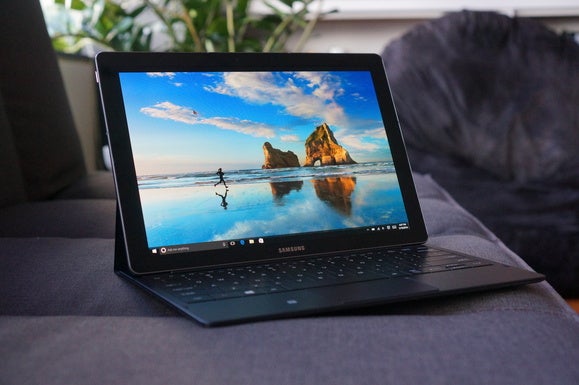
Gordon Mah Ung
You may not be guaranteed those almost nine hours of battery life, too, because an OLED display uses less energy whenever black is a color onscreen, as is the case for our video playback test (widescreen movies have those big bars at the top and bottom of the screen).
That said, the TabPro S costs hundreds less than a comparable Surface Pro 4 while offering that beautiful display.
[$899 MSRP]
Best budget hybrid laptop
If you’re thinking that the Surface 3 is the Surface Pro 4’s affordable alternative, think again. For $800, HP’s Spectre x2 gives you 128GB of storage, 4GB of RAM, and Intel’s Core m3 series—the company’s latest Skylake CPU, tuned for low power. It’s also LTE-ready, so you can easily add it to your cellular plan for untethered working (that’s a $100 option for the Surface 3). Oh yeah, and you get the keyboard, too.
That’s a heck of a package, especially given that a comparable Surface 3 bundled with its optional type cover costs $830—and sports an Atom processor. About the only places that the Surface 3 shines are in battery life and portability: The Spectre x2 died a little more than an hour sooner in our battery rundown test, and it’s well over a half-pound heavier.
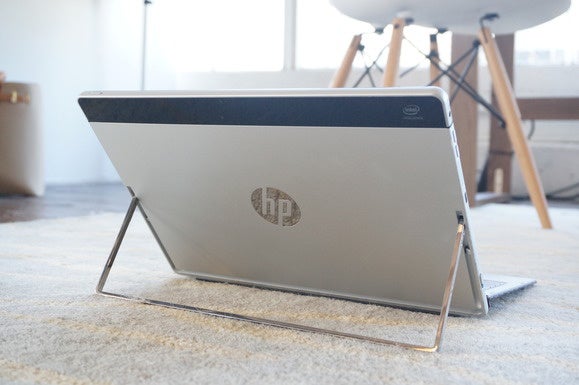
Gordon Mah Ung
But the Spectre x2’s larger display and solid performance put it far ahead of the Surface 3 for office and home tasks. Relative to the Surface Pro 4, there are compromises it makes in the display (which has a larger bezel, skews blue, and is slightly less bright), as well as with its kickstand design, but you still get tremendous bang for your buck.
[$950 MSRP; $1,150 as reviewed (discontinued model)]
Best gaming laptop
The arrival of Nvidia’s Pascal-based mobile GPUs has transformed high-end gaming laptops—for the first time, they’re able to give desktops a run for their money. Case in point is MSI’s new GT73VR Titan, which pairs a GTX 1080 mobile GPU with a 17.3-inch, 1920×1080, 120Hz G-Sync panel. It delivers crazy-smooth, high frame-rate gaming at an unprecedented level: We saw framerates over 150 fps with everything maxed out in our Tomb Raider and Middle-earth: Shadow of Mordor benchmarks.

Other GTX 1080 options exist (and some of them cheaper than our $3,599 GT73VR review unit), but none come as loaded with benchmark-topping technology and run as quietly. Origin’s similarly configured EON17-X, for example, blasts like a jet engine, but provides only a very small gain in performance.
This Titan does have a couple of potential drawbacks—the trackpad’s buttons, for example, are incredibly stiff and require a lot of force to click—but overall, the GT73VR is one extremely sweet gaming notebook that has what it takes to dominate its class.
The number of laptop options in 2016 has been wide and varied. Form factors like convertibles and 2-in-1s have become as common as traditional clamshells, and the release of Nvidia’s Pascal GPU architecture may forever change our expectations of gaming laptops. No matter what you’re hunting for, it’s been a great year for anyone buying a new system.
To help you with your decision, we’ve been hard at work evaluating more laptops—our latest reviews include the Lenovo Yoga 910, 2016 HP Spectre x360, Acer Predator 15, Acer Swift 7, and 2016 Surface Book i7. Competition’s been fierce, and so we’ve also got new winners in our Best Ultrabook (2016 Kaby Lake Dell XPS 13), Best Convertible (2016 HP Spectre x360) and Best Gaming Laptop (MSI GT73VR Titan) categories, plus a couple of fresh runners-up, too. And with the launch of Nvidia’s game-changing Pascal GPUs, we’ve even introduced a new category: Best Portable Gaming Laptop.
- Best ultrabook laptop
- Best convertible laptop
- Best budget ultrabook laptop
- Best luxury laptop
- Best hybrid laptop
Best ultrabook laptop
Dell might be sticking to the adage of “If it ain’t broke, don’t fix it” when it comes to the XPS 13, but that strategy keeps producing the best ultrabook of the bunch. The Kaby Lake XPS 13 shares the same design as its predecessors: a quality aluminium exterior and carbon-fiber top, and that wonderfully compact, bezel-free 13-inch screen.
Dell actually released two updates to the XPS 13 in 2016: The one at the start of the year swapped in a Skylake CPU, added a USB Type-C port that served as an alternative charging port, and offered upgraded storage options. The most recent refresh—and our new pick for Best Ultrabook—keeps the same chassis changes as the Skylake XPS 13, features a jump to Intel’s new Kaby Lake processor, and sports a slightly larger battery. You get improved performance across the board, with a nice bump of an extra half-hour of battery life during video playback.
 Gordon Mah Ung
Gordon Mah UngOur only lingering complaint is the small keyboard, but overall, you can’t lose with the newest XPS 13. It’s a truly compact ultrabook that punches out of its class.
[$800–$2,039 MSRP; $1149 MSRP as reviewed]
Runner-up
If looks are more your thing, the HP Spectre 13.3 certainly has a distinct profile: It’s one of the thinnest ultrabooks around. For anyone coveting the streamlined experience of Apple’s 12-inch MacBook, this 13-inch notebook will bring you close while providing superior performance.
You might expect such a skinny laptop to sport a lower-wattage Core m processor, but HP fit a 15W Skylake Core i7-6500U into this Spectre. That puts it on a par with other, chunkier top ultrabooks (like the XPS 13). Combined with its 256GB M.2 SSD, it runs smoothly and swiftly during typical office drone work (word processing, spreadsheet editing, web browsing, etc), without any heavy throttling of performance during CPU-intensive tasks. HP also made the ports count: While there are just a few, you get not one but two Thunderbolt 3 ports, as well as a USB-C port.

The drawbacks of this modern and sleek notebook are its battery life, which is modest due to its smaller battery, and its wider frame. (The Spectre 13.3’s hardware and cooling configuration requires a certain amount of space—HP’s engineering is impressive but can’t defy the laws of physics.) It’s for those reasons that we prefer the Dell XPS 13, but this laptop is still a very fine companion.
[$1,170–$1,250 MSRP; $1,250 MSRP as reviewed]
Best convertible laptop
We liked the first Spectre x360 when it launched back in 2015, but that 2-in-1 laptop had a few flaws. The updated version, which just launched in October, blows away its predecessor by being smaller, thinner, and noticeably lighter, while still providing excellent performance and battery life.
Inside our review model was a Kaby Lake Core i7 processor that kept pace with a quad-core Skylake CPU during tasks like word processing and spreadsheet editing, and handled games like Minecraft and League of Legends at low-resolution and low-quality image settings. The battery on our unit lasted almost eleven hours during continual video playback.

Gordon Mah Ung
This laptop is so good, it gives our top pick for Best Ultrabook a run for its money. If it weren’t for the wide-aspect ratio trackpad and the low number of ports (just three total, and you lose one to charging whenever it’s time to top up), it might have won. For now, though, it can rule this convertible category until it’s time to challenge the Dell XPS 13 again.
[$1,160–$1,300 MSRP; $1,300 MSRP as reviewed]
Best budget ultrabook laptop
Enter Asus’ UX305, the best budget ultrabook in town. It packs in 8GB of RAM and a 256GB SSD for the low price of $700.
You’d think Asus would skimp in build quality or sneak in a lousy screen, but it didn’t. The body is aluminum, and the display is a 1920×1080 IPS screen with anti-glare finish. It’s also one of the thinnest ultrabooks today, at roughly 12mm thick and weighing just 2.6 pounds.
The CPU isn’t a Core i5-class, but rather than step down to Atom, Asus stepped sideways, with Intel’s Core M in the original UX305 and the new Core m3 in the updated UX305. We’re actually in the middle of testing the updated Core m3 UX305. The early results say it’s comparable in every way except perhaps performance.

Asus
There are some compromises. There’s no backlighting on the keyboard, which is pretty standard in any Ultrabook today. The trackpad is a tad springy. Still, it’s one hell of a deal in a price range that usually nets you thick, ugly, and plastic.
[$699–$999 MSRP; $699 MSRP as reviewed]
Best luxury laptop
There’s no way to describe Microsoft’s Surface Book as anything but a luxury item. The configuration you want—the one with the GPU under the keyboard—isn’t even available until you fork over $1,650. But what you get is glorious.
Start with the beautiful, high-resolution 13.5-inch screen, a discrete GeForce option, Skylake dual-core and exceptional battery life. That you can remove the screen to use as a tablet—err, clipboard—with the included pen is just a major bonus.

Performance in general is near the top of the heap, particularly in the Core i7 model that we reviewed. On graphics loads, including video-accelerated encoding, it can’t be touched by anything in its class.
Those who can afford it are going to get what they want: a beautiful laptop that’ll probably start conversations in the first-class cabin as you fly from Dubai to London.
[$1,499–$3,199 MSRP; $3,199 MSRP as reviewed]
Best hybrid laptop
The reigning winner in this category shouldn’t be a surprise, given that Microsoft gave legs to the concept of hybrid tablet/laptop devices. The Surface series is really an evolutionary step beyond the typical “convertible” devices that physically separate from the keyboard to run independently as tablets. Surface clones have arisen that are also light, yet still very capable: Lenovo has its Miix 700, HP has its Spectre 12 X2.
We expect the clone wars to keep marching on, but the best one today remains the Surface Pro 4. It has a top-rated display, great performance, and its keyboard and trackpad are miles ahead of competing designs (*cough* iPad Pro). We choose it over the Surface Pro 3 for its performance and better thermals (with less fan noise) compared to the older model.

Rob Schultz
The only caveat: It’s expensive—and the essential keyboard adds $130 to the price. (Nope, it’s not included.) That means the mid-range Surface Pro 4 with 256GB of storage, 8GB of RAM and Core i5 is a $1,430 computer. Ouch.
Still, for those who really valuable portability—it really is laptop performance in a tablet—and will actually use it as a tablet on occasion, you’d still be hard pressed to beat the Surface Pro 4 right now.
[$899-$1,799 MSRP; $1,430 MSRP as reviewed with optional keyboard cover]
Runner-up
Samsung’s first convertible is incredibly thin, extremely lightweight, and has a jaw-droppingly gorgeous OLED screen. It also posts very reasonable performance in the kinds of basic tasks it’ll get used for, and gets almost nine hours of video playback time.
What keeps it out of the top convertible slot is a handful of foibles: It has only one USB port (a Type-C) and no included dongles, the screen dims after one minute of inactivity without the option to turn off the feature, and its included keyboard feels loose.

Gordon Mah Ung
You may not be guaranteed those almost nine hours of battery life, too, because an OLED display uses less energy whenever black is a color onscreen, as is the case for our video playback test (widescreen movies have those big bars at the top and bottom of the screen).
That said, the TabPro S costs hundreds less than a comparable Surface Pro 4 while offering that beautiful display.
[$899 MSRP]
Best budget hybrid laptop
If you’re thinking that the Surface 3 is the Surface Pro 4’s affordable alternative, think again. For $800, HP’s Spectre x2 gives you 128GB of storage, 4GB of RAM, and Intel’s Core m3 series—the company’s latest Skylake CPU, tuned for low power. It’s also LTE-ready, so you can easily add it to your cellular plan for untethered working (that’s a $100 option for the Surface 3). Oh yeah, and you get the keyboard, too.
That’s a heck of a package, especially given that a comparable Surface 3 bundled with its optional type cover costs $830—and sports an Atom processor. About the only places that the Surface 3 shines are in battery life and portability: The Spectre x2 died a little more than an hour sooner in our battery rundown test, and it’s well over a half-pound heavier.

Gordon Mah Ung
But the Spectre x2’s larger display and solid performance put it far ahead of the Surface 3 for office and home tasks. Relative to the Surface Pro 4, there are compromises it makes in the display (which has a larger bezel, skews blue, and is slightly less bright), as well as with its kickstand design, but you still get tremendous bang for your buck.
[$950 MSRP; $1,150 as reviewed (discontinued model)]
Best gaming laptop
The arrival of Nvidia’s Pascal-based mobile GPUs has transformed high-end gaming laptops—for the first time, they’re able to give desktops a run for their money. Case in point is MSI’s new GT73VR Titan, which pairs a GTX 1080 mobile GPU with a 17.3-inch, 1920×1080, 120Hz G-Sync panel. It delivers crazy-smooth, high frame-rate gaming at an unprecedented level: We saw framerates over 150 fps with everything maxed out in our Tomb Raider and Middle-earth: Shadow of Mordor benchmarks.

Other GTX 1080 options exist (and some of them cheaper than our $3,599 GT73VR review unit), but none come as loaded with benchmark-topping technology and run as quietly. Origin’s similarly configured EON17-X, for example, blasts like a jet engine, but provides only a very small gain in performance.
This Titan does have a couple of potential drawbacks—the trackpad’s buttons, for example, are incredibly stiff and require a lot of force to click—but overall, the GT73VR is one extremely sweet gaming notebook that has what it takes to dominate its class.
source”cnbc”
